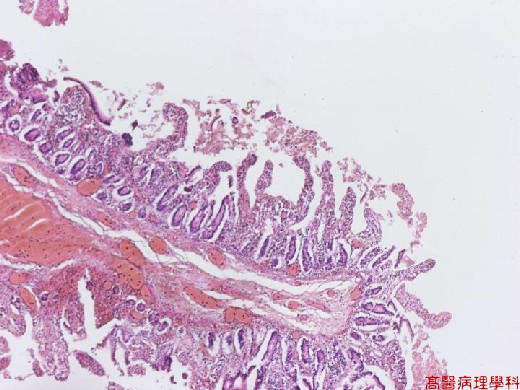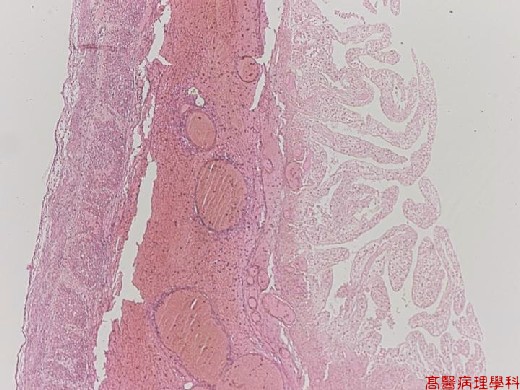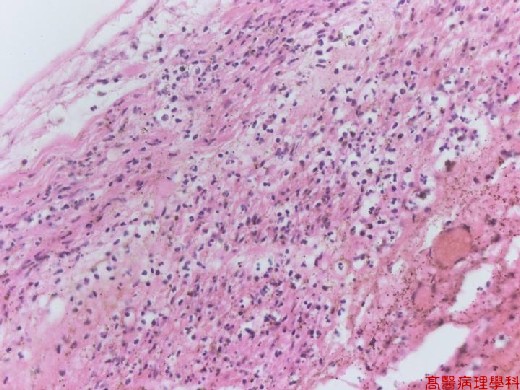《Slide 192.》Hemorrhagic infarction, Ileum
A. Brief Descriptions:
-
Red or hemorrhagic infarcts are encountered usually (1) with venous occlusions,(2) in loose tissues,(3) in tissues with a double circulation, and (4) in tissues previously congested.
-
Acute occlusion of one of the three major supply trunks of the intestines (celiac, superior and inferior mesenteric arteries) may lead to infarction of intestine.
B. Gross Findings:
-
The infarcted bowel appears intensely congested and dusky to purple-red and the wall becomes edematous, thickened, rubbery, and hemorrhagic.
C. Micro Findings:
-
Edema.
-
Interstitial hemorrhage.
-
Sloughing necrosis of the mucosa.
-
Inflammatory response into mucosa and submucosa.
D. Others:
略.
E. Reference:
-
Robbins Pathologic Basis of Disease, 6th ed. P.822.
|
|
【 Fig. 192-1 (LP)】The bowel wall becomes edematous, thickened, rubbery, and hemorrhagic.
|
|
【 Fig. 192-2 (LP)】Sloughing necrosis of the mucosa.
|
|
【 Fig. 192-3 (LP)】Interstitial hemorrhage.
|
|
【 Fig. 192-4 (HP)】Inflammatory response into mucosa and submucosa.



